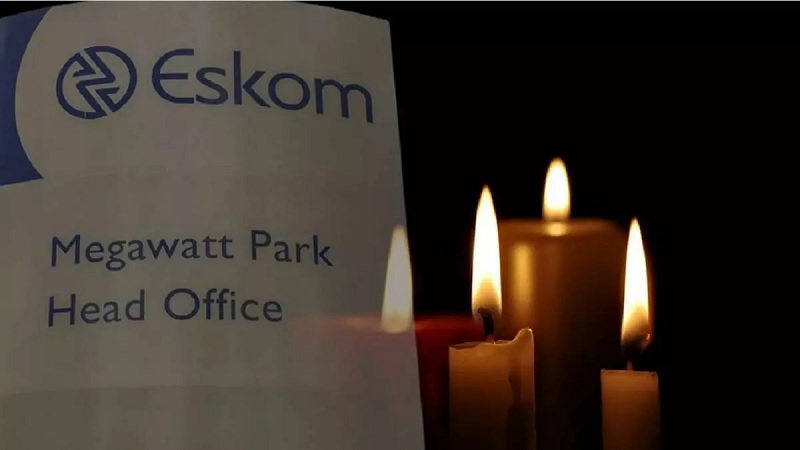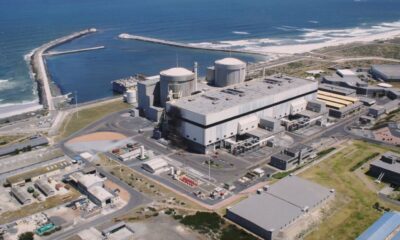News
No Load Shedding, Just Progress: How Eskom Is Keeping South Africa’s Lights On This Winter

Eskom’s surprise winter win shows what’s possible when maintenance meets management
South Africans are no strangers to sudden power cuts and the all-too-familiar phrase: “Please note, we’re moving to Stage 4…” But something feels different this winter. It’s quieter. Literally. The lights are still on.
Since 15 May 2025, Eskom has not implemented a single hour of load shedding, a rare and welcome relief during the coldest, highest-demand months of the year.
So how did we get here? Is it luck, clever planning, or something more? Let’s unpack what’s behind this uncharacteristically stable winter season and why it’s such a big deal.
Grid Holding Steady, Even as the Cold Bites
Eskom says the national grid has remained stable for more than two months thanks to a noticeable drop in unplanned outages and an improvement in generation capacity. As of 25 July, the grid had 30,236MW available, more than enough to cover the day’s 27,715MW peak demand.
That gap though narrow, is what’s keeping the lights on. And with nearly 4,000MW set to return to service ahead of Monday’s evening spike, Eskom is looking to reinforce that buffer.
The current Energy Availability Factor (EAF) the percentage of Eskom’s fleet that’s up and running, hovered between 62% and 66% this past week. That may sound modest, but for Eskom, it’s a noticeable improvement from last year’s figures, especially with winter demand surging.
What’s Changed Behind the Scenes
Behind Eskom’s stronger performance is a combination of disciplined maintenance and better resource management. For example, planned maintenance held steady at an average of 5,050MW in July. Unplanned breakdowns, measured as the Unplanned Capability Loss Factor (UCLF), dropped to 23.79%, a noticeable improvement from earlier this year, though still higher than this time last year.
Also worth noting: the utility has dramatically cut back on its emergency diesel usage. Last week, the open-cycle gas turbines (OCGTs) those expensive, fast-firing backup generators, were only used 1.86% of the time, down from 8.6% the week before.
For a country long addicted to diesel bailouts during grid emergencies, this drop is a breath of financial fresh air.
The Money Trail: Diesel Spend in Check
Eskom reported a corrected diesel spend of R5.554 billion between April and July, still eye-watering, but significantly better managed than expected. A misreported figure last week caused confusion when the spend was mistakenly listed as R5.897 billion in reality, that number reflected a per-megawatt-hour rate, not the total spend.
This level of accountability, even in correcting internal errors, signals a shift in Eskom’s communication tone. It’s cautious optimism, yes, but optimism nonetheless.
What’s Fueling the Good News?
Aside from fewer breakdowns and a more balanced maintenance plan, there’s one sleeper hero in this story: Kusile Unit 6. Since March 2025, the unit has quietly contributed 720MW to the grid, not yet commercially operational, but already a helpful player in this winter’s drama.
Eskom’s year-to-date fuel costs hit R5.616 billion to generate 952.41GWh via OCGTs. That’s nearly double last year’s winter generation from the same source, but still within budget. The load factor for these turbines has dropped to 10.11%, compared to 5.23% last year, a clear sign Eskom is using its resources more strategically.
Community Caution: Stay Legal or Get Cut
While the grid holds strong, Eskom has reminded communities not to get too comfortable, especially those engaging in illegal electricity connections and meter bypassing.
These practices overload transformers, spark dangerous explosions, and undermine the power system’s hard-fought stability. In high-risk areas, Eskom has had to implement “load reduction” not load shedding, but targeted switch-offs to protect infrastructure.
Residents are being urged to purchase electricity only from accredited vendors and register for free basic electricity with their municipalities if eligible.
A Rare Winter Win… But Don’t Get Too Cozy
With 37 days left in Eskom’s Winter Outlook, South Africa is not out of the woods just yet. If unplanned outages stay below 13,000MW, load shedding likely won’t return. But if breakdowns spike to 15,000MW, we could be staring at 21 days of Stage 2, not great, but far from the rolling blackouts of winters past.
What South Africans Are Saying
Social media reaction has been a mix of cautious praise and side-eye skepticism. “So we can actually have power through winter? Miracles do happen,” one X user joked. Others aren’t celebrating just yet: “Talk to me when we survive summer,” another user posted.
Still, for a nation weary from years of energy instability, this brief period of calm feels… almost historic.
No load shedding this winter? So far, so good. Eskom’s not claiming total victory, but if this trend continues, it may just restore a little faith in a utility South Africans had almost given up on.
Let’s hope the lights stay on and not just because we’re saving diesel.
{Source: The Citizen}
Follow Joburg ETC on Facebook, Twitter , TikTok and Instagram
For more News in Johannesburg, visit joburgetc.com



























